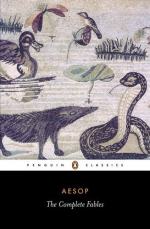|
This section contains 4,311 words (approx. 15 pages at 300 words per page) |

|
SOURCE: Robert Dodsley, reprinted from "Select Fables of Esop and Other Fabulists," in An Essay on Fable, The Augustan Reprint Society, 1965, pp. lvii-lxxvii.
In the following essay, published in a second imprint in 1764 and reprinted in 1965, Dodsley describes the characteristics of the fable including its ability to convey moral truth without an offensive air of moral superiority.
Introduction
Whoever undertakes to compose a fable, whether of the sublimer and more complex kind, as the epick and dramatick; or of the lower and more simple, as what has been called the Esopean; should make it his principal intention to illustrate some one moral or prudential maxim. To this point the composition in all its parts must be directed; and this will lead him to describe some action proper to enforce the maxim he has chosen. In several respects therefore the greater fable and the less agree. It is the...
|
This section contains 4,311 words (approx. 15 pages at 300 words per page) |

|


